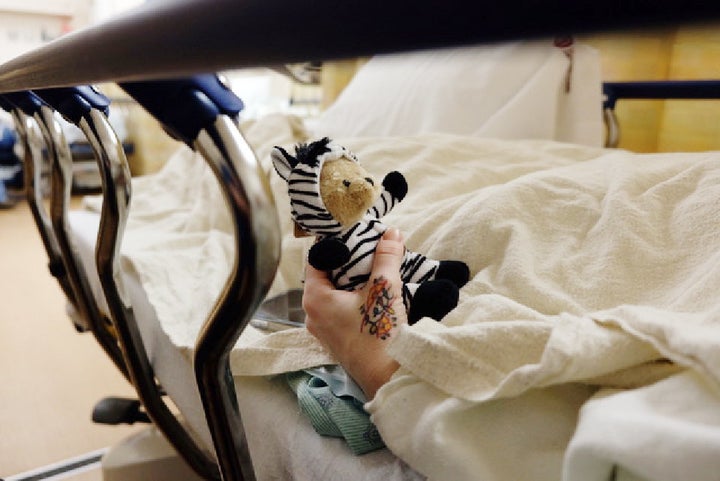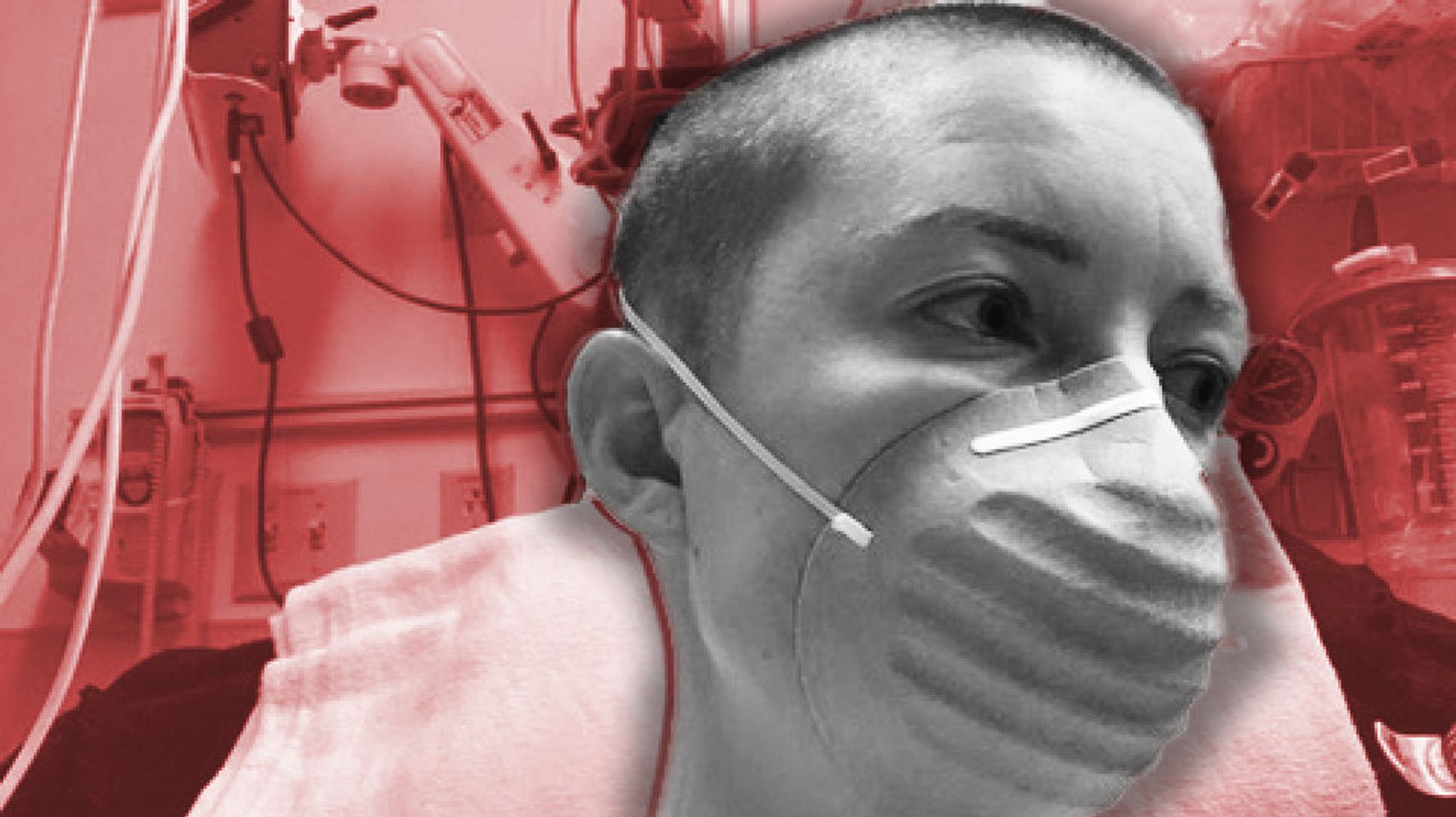[ad_1]
“My disease has a 50 percent heritability rate, minimum,†I explained, cradling my phone between my ear and my shoulder as I talked with the man who would become my fiancé. I was 28 and had been diagnosed with a collagen disorder called hypermobile Ehlers-Danlos syndrome two years earlier.
Derek and I hadn’t been dating long, but the approaching Mother’s Day holiday left me with complicated feelings about my reproductive ability. Many of my friends had already started families; some were on kid two or three. I wiped away tears and tried not to sniffle too loudly, instead speaking clinically and carefully. “That rate could increase if the fetus is genetically female,†I told him. “And it definitely goes up if both parents are carriers, which can’t be proven by genetic testing.â€
That phone call was only the beginning of an infuriating mission to take control of my reproductive health and well-being, a task stymied by the fact that America’s sorry excuse for a functional health care system obsessively prioritizes a uterus owner’s ability to conceive above all else. (I use “uterus owner†to include all people with female reproductive organs, including cisgender women, transgender people and nonbinary people like myself.)
My illness’ severity led me to the conclusion early on that childbirth would irreparably damage my already broken body and would never be the right choice for me. My joints dislocate painfully and at random. I have difficulty swallowing food. I bruise like an overripe peach. I faint if I have to stand for too long. Wounds take much longer to heal on me than on a normal human.
Derek was someone I could see myself spending my life with, but to do that, I had to be honest. “Even without taking into account the havoc a pregnancy would wreak on my body, I can’t bring myself to inflict this kind of pain onto a child,†I told him. “It seems too unfair.â€
My illness’ severity led me to the conclusion early on that childbirth would irreparably damage my already broken body and would never be the right choice for me.
I first started researching permanent birth control solutions after my hEDS diagnosis. I never wanted to have to decide between my health and the heartbreak of terminating an unplanned pregnancy (since we all know birth control is never 100 percent effective). I’d already made the difficult decision to terminate a pregnancy at 18, and though I was grateful to have that choice, it wasn’t a procedure I ever wanted to experience again. Plus, I’d been dealing with gynecologic issues since the day I started my period. Why bother with additional pain and the unpredictability of an irregular cycle month after month if reproduction wasn’t ― couldn’t be ― in my future?
I ran into roadblocks from the start. Doctors refused to take me seriously when I requested a surgical hysterectomy. “You’re not even 30 yet,†they patronizingly told me. “You might change your mind about having children. Your future partner might want children!â€
Somehow, my personal autonomy, my health and my comfort didn’t rate high enough to outrank the desires of my future, then-nonexistent partner. And nothing I said could change my doctors’ minds, not the stories about my frequently dislocating hips, my mom’s complicated pregnancies or the increased rate of miscarriage and preterm labor for EDS patients.
When Derek and I became more serious, I asked him to join me at my appointments. I reasoned that if my partner reassured my doctors that he was A-OK with a hysterectomy, maybe they’d be more open to the idea. I appreciated Derek’s company and outlook, but it infuriated me that I had to leverage his existence to get what I needed from the medical complex.
Doctors refused to take me seriously when I requested a surgical hysterectomy. ‘You’re not even 30 yet,’ they patronizingly told me.
Instead of approving me for surgery, doctors suggested I try an intrauterine device for pregnancy prevention. I pointed out my medical history of migrating implanted medical devices and my concerns about uterine perforation given my collagen disorder; they shrugged their shoulders. I told them many of my fellow hEDS patients had serious IUD issues, including increased pain levels; they had no solutions for me.
“You’re just too young,†they said (I was in my early 30s). “And your insurance will never cover a hysterectomy, because you still might change your mind.â€
This response came despite the fact that most insurance companies have zero issue covering vasectomies without medical cause. It came despite my explanation ad nauseam that any pregnancy, wanted or otherwise, would cause further injury to my already delicate body (and likely pass along the same debilitating disease to any progeny). To both my doctors and my insurance company, the only thing that seemed to matter was leaving the door open to the possibility of pregnancy — my own pain, well-being and agency be damned.
My gynecologist finally agreed to help me build a case that my insurance company should cover a surgical hysterectomy after a blood clotting disorder diagnosis forced me off all birth control; without hormonal management, my gynecological symptoms worsened. Some days, the pain was so bad I couldn’t stand up straight.
“We have to prove to them that the cost is worth it,†she explained. “I’ll have to write a letter. Your pain doctor will need to write a letter. And we’ll need to start with ultrasounds to see if you have any cysts. If we can give insurance a medical reason for the surgery, they’re more likely to approve the request.â€
Once again, I’d been minimized to a monetary bottom line.

When the ultrasound failed to reveal any cysts, my doctor gave me two options: Begin medication to artificially induce menopause (which would prevent pregnancy and might minimize my pain but would almost inevitably lead to osteoporosis and other complications), or request a laparoscopic exploration of my abdomen and reproductive organs to determine what was causing my pain.
Derek sat across from me holding glossy printout images of my insides when I woke up post-surgery. My right fallopian tube, stretched wide with a benign tumor called a fibroid, had been removed. Both of my ovaries had cysts on them; my left buckled beneath the weight of one nearly as large as a golf ball. Adhesions and cysts littered my abdomen, caused by endometriosis, a disorder in which the tissue that normally lines the inside of the uterus colonizes reproductive organs (and, more rarely, the abdomen).
I finally held photographic proof that something was wrong after years of being minimized. But the fact I had to wait so long for a diagnosis infuriated me considering the statistics. Endometriosis affects more than 11 percent of women ages 15 to 44, and the most common symptom is pain ― something uterus owners are rarely taken seriously for. Patients with endometriosis suffer from infertility in up to 50 percent of cases. The National Institutes of Health estimates that up to 50 percent of women of reproductive age have fibroids; that number increases to 70 percent by age 50 for white women and an incredible 80 percent for African-American women. The only guaranteed solution for fibroids? Hysterectomy.
Despite my doctors’ knowledge of the debilitating collagen disorder that made pregnancy and childbirth a nonstarter for me, they wouldn’t recommend me as a candidate for surgical hysterectomy because they feared I might “change my mind†about reproduction. So I underwent an initial surgery (which meant more money out of my pocket for copays and an increased amount of time spent healing in a body that heals abnormally, which meant unpaid time off work) to diagnose the cause of my pain. The cause was a reproductive disease that often causes infertility and had already damaged some of my reproductive organs, thus affecting the very reproductive ability my doctors had initially fretted over.
Finally, the case was made that a hysterectomy was medically necessary ― and worthy of insurance coverage.
The cause was a reproductive disease that often causes infertility and had already damaged some of my reproductive organs, thus affecting the very reproductive ability my doctors had initially fretted over.
What strikes me most about this entire experience is that so much of my pain could have been avoided with a number of easy solutions. Unfortunately, if you think my story is unique, you’re wrong: Stories abound of people with female reproductive organs whose pain and health issues weren’t taken seriously until they started having fertility issues ― or, inversely, of those whose doctors shrugged off their concerns because taking care of them may have affected their ability to reproduce.
America’s health care system has to start believing our pain instead of minimizing it. If a patient repeatedly mentions severe, intense pain associated with their periods, doctors must take those complaints seriously before their condition worsens beyond treatability. This kind of pain is not a normal function of a menstrual cycle, and both society and our health care system need to stop treating it like it is. Educators, from high school sex ed teachers to med school professors, must include common female conditions like endometriosis, fibroids and ovarian cysts in their teachings so both practitioners and patients can more easily identify them. That uterus owners often see a multiyear delay between the first symptom and a diagnosis is shameful.
Finally, doctors, insurers and everyone in between must learn to better respect our bodily autonomy. Men are able to freely (often literally, at no cost to them) make decisions about their fertility and reproductive capabilities. People with uteruses deserve the same. Fertility decisions cannot be made (or limited) simply because the patient’s nonexistent future partner might want to procreate. If a person opts into surgery to prevent her ability to have children, that decision is hers alone. Had my request for a hysterectomy been respected the first time I pursued it, I would have avoided six years of unnecessary pain, suffering and medical bills.
I’m now one month out from the surgery that removed my cervix, uterus, remaining fallopian tube and damaged ovary, and I can already feel the difference. I no longer have to sleep with a pillow across my stomach to stanch the pain or protect myself from a haphazard cat walking across me. I don’t spend my nights curled in the bathroom, hoping I don’t vomit from the pain and dislocate a rib or my jaw. My evolving hEDS symptoms will always be with me, but I no longer worry about the terror of handling an unplanned pregnancy.
I just wish the medical personnel and insurers who had the ability to help me had chosen to put my own health ahead of my childbearing abilities.
Ace Ratcliff lives with hypermobile Ehlers-Danlos syndrome, dysautonomia and mast cell activation syndrome, which all make for a particularly rebellious meat cage. Her advocacy is centered on intersectional feminism with a focus on disability rights.
Calling all HuffPost superfans!
Sign up for membership to become a founding member and help shape HuffPost’s next chapter
[ad_2]
Source link






